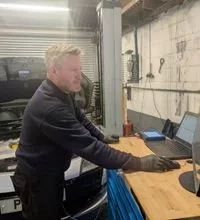The ten most common MOT blunders
In this article: MOT testing is incredibly important, we list the mostly frequently made mistakes, so you don't make them
MOT testing is one of the most critical aspects of the motor industry, making sure only vehicles that are safe to use our roads do so. Testers and managers’ jobs can be stressful, so we’ve brought together the 10 most common pitfalls and mistakes, to help you avoid them...
1. Registering the wrong vehicle for testing: If two blue Mondeos are manufactured on the same day, registered by the same dealer and have very similar details. One ends up being owned by someone who looks after his car, while the other has eight owners and is ragged from day one, and only given attention when it breaks down.
The first car is MOT’d, but the tester enters the details of the wrong car, using details from another source – an old MOT, service book, garage invoicing and booking software package for example.
The DVSA take the tester and garage to task. “It’s only an admin error,” cries the tester and garage. The trouble is, the unloved, and possibly unroadworthy car magically has a new MOT, so that’s a potentially dangerous vehicle has been put back on the road. Meanwhile, the owner of the well looked after motor is stood beside the road with the police, getting booked for not having an MOT.
2. Not signing off when leaving the MOT system unattended: the DVSA walk in and you’re in trouble for security straight away.
3. Forgetting to stay up to date: your testing profile is out of date or incomplete, you can’t be bothered to tell the DVSA your email or phone number? Don’t be surprised if you miss out on something you later need to know, such as an MOT Appeal...
4. Do it right: Not testing diesel vehicles to “Plate Value” when required to do so.
5. Short retest times: Failure for exhaust, broken front road-spring, brake calliper leaking & headlight bulb. Three minute retest? No, it’s a retest that needs an underside inspection, (probably with jacking of the front), to check the workmanship, an emissions test, brake test and headlight aim test. DVSA will expect to see a retest time that reflects this – probably 15 minutes or more.
Manage by example
But it isn’t just those conducting the tests that need to be wary, there are points that MOT managers need to be aware of too, ones that could help smooth out the day to day running of centres:
6. Not tallying your test slots used against MOTs: It may sound simple, but trust me, not all managers are doing this. You have 30 test slots at the start of the week, and by Friday you have conducted 20 tests, so why are there nine slots left?
7. Not running performance reports: why does one tester have a failure rate of 31%, yet the other, who tests similar vehicles has a failure rate of 63%? There may well be a reason for this, but unless you’re conducting performance reports how will you know, and the DVSA will have expected you to have investigated.
8. Calibration Certificates out of date: the DVSA are on site and the manager is in a flap, “I can’t understand it? The calibration engineers should have told me it was due and made an appointment.” But what if they were too busy to come and see you the manager?
9. Not knowing the Garage Red, Amber, Green score: “Well I checked it the other week, or was it the other month?” How can you demonstrate to the DVSA you actually manage your MOT garage correctly if you don’t stay on top of this simple part of running your centre? Imagine signing on in front of DVSA and finding its red?
10. Not physically checking your own MOT bays: Ask yourself, if DVSA were to visit today, would they be happy with the condition of the MOT bay?
Visit the IMI, the one-stop shop for all your MOT needs.




